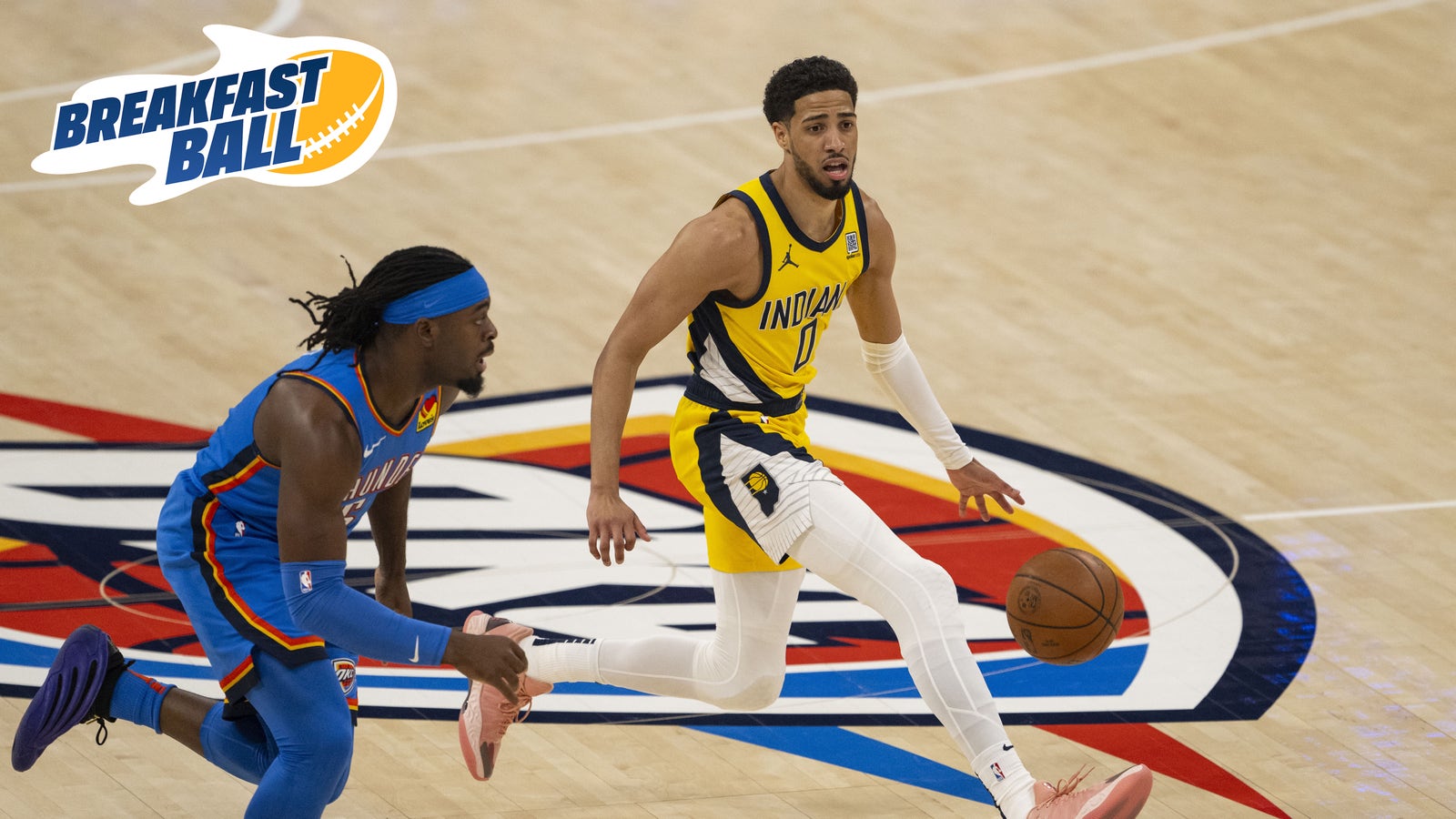Tyrese Haliburton laid on his stomach with just over five minutes left in the first quarter of Game 7 of the NBA Finals, pounding the floor as emotions poured out of him.
Not this.
Not now.
Anyone who has closely followed the playoffs knew Haliburton suffered an Achilles injury without needing to go to medical school or seeing the official results of an MRI. We saw the same crushing look in Damian Lillard‘s and Jayson Tatum’s eyes this postseason. We witnessed their faces contort with the anguish of knowing that a year of their careers would be stolen from them and that they may never be the same. We saw their pain as they writhed on the floor, not even trying to stand.
This season, seven players have suffered torn Achilles tendons, including Indiana’s James Wiseman, New Orleans’ Dejounte Murray, Indiana’s Isaiah Jackson and Miami’s Dru Smith, along with the three stars who sustained the injury during the playoffs.
Dr. Nirav Pandya, a professor of orthopedic surgery at UC San Francisco, said that’s an alarming uptick, especially considering over a 32-year span from 1990-91 to 2022-23, there were only 45 NBA players who ruptured Achilles tendons, according to a study published in the Orthopaedic Journal of Sports Medicine.
“I think it’s pretty remarkable that we’re seeing that much of a change in this injury,” Pandya told me. “It used to just be the weekend warrior, end-of-career athlete getting them.”
Pandya believes there are three reasons why the injury is becoming more prolific.

Damian Lillard and Jayson Tatum are two NBA superstars who suffered Achilles injuries in this postseason. (Getty Images)
One: The game has become more explosive and aggressive than it was in the 1980s and ’90s. Two: The NBA schedule has become increasingly rigorous, with back-to-backs and not enough rest in between contests. Three: Wear and tear from AAU circuits and year-round basketball has led to athletes’ bodies being somewhat broken down when they enter the league.
Different ideas have been floated to decrease these types of injuries, such as shortening the 82-game season, spreading games over a longer period of time, reducing the duration of games from 48 minutes to 40 minutes, scaling back the penalties for load management and eliminating the 65-game requirement for players to become eligible for NBA awards.
Before Game 1 of the Finals, NBA commissioner Adam Silver said the league is constantly discussing how to reduce injuries. But he added that at this time, he doesn’t necessarily think there needs to be any format changes.
“I don’t think there’s any magic bullets here,” Silver said June 6. “In fact, injuries are considerably down [these] playoffs from what it’s been historically. I think it’s our second lowest in 10 years. We have pretty healthy teams coming into the Finals now.”
Another issue is there’s a toxic culture in sports that encourages athletes to play through injuries.
With Haliburton, for example, multiple national pundits implied that Haliburton needed to play through a calf strain that he suffered in Game 5, implying that he’d be weak if he didn’t at least give it a go in Game 7.
Pandya believes that mentality is dangerous. He added that Haliburton’s calf injury put him at greater risk for an Achilles tear.
“Anytime you suffer an injury anywhere near the Achilles tendon, whether it’s up in the calf or down in the foot, there’s more stress that’s going to go across that tendon,” Pandya told me. “That muscle is already fatigued, already injured, so if you have an explosive move, that stress is going to get transferred down there. So, absolutely one of the concerns with a calf injury, even if it’s minor, is it can lead to an Achilles rupture.”

Tyrese Haliburton had been dealing with a calf injury during the NBA Finals. (Photo by Justin Ford/Getty Images)
A similar thing happened with Kevin Durant in 2019 when he was starring for the Golden State Warriors. Durant, who missed a month of the playoffs after sustaining a strained right calf in the second round of the playoffs, suffered a torn Achilles upon his return in Game 5 of the Finals against the Toronto Raptors.
Durant, who was 30 when he suffered the injury, went on to have a better recovery than most.
“If you look at Achilles injuries, with the exception of Kevin Durant, no NBA player has really come back at the same level after his injury,” Pandya told me.
With that in mind, Pandya believes athletes need to fully understand the risks of playing through certain injuries, especially those which could exacerbate the possibility of a ruptured Achilles.
This much is for sure: Haliburton wanted to play.
“I’ve worked my whole life to be here and I want to be out there to compete,” Haliburton said after Game 5 of the Finals. “…If I can walk, then I want to play.”
Another question is whether the Pacers should’ve allowed him to take the court. That’s where things can get tricky.
“It’s hard when they’re able to run and jump and do all the things they need to on the court,” Pandya told me. “He really was playing great. And if he understands that risk, you do clear him to play.”
So now the big question is what’s the likelihood of the players who suffered recent Achilles tears returning to their pre-injury form, as Durant did?
“One of the things that made Durant able to come back, for the most part, he’s not a super explosive player,” Pandya told me. “He’s a jump shooter, he creates his shot, so he’s not really depending on his Achilles as much. But for players like Haliburton, for Jayson Tatum, for even Lillard to a certain extent, their style of play is predicated on being explosive and jumping. Once you rupture your Achilles, that’s going to be impacted.”

Kevin Durant’s Achilles injury at the 2019 NBA Finals made him miss the entirety of the next season. (Photo by Claus Andersen/Getty Images)
Each of the Achilles tears we witnessed this season were hard to watch. Players know they could become lesser versions of themselves on the other end of their surgeries. But Haliburton’s injury was especially heart-wrenching, given the stage during which it happened.
He went from being voted the most overrated player in the league by his peers in a poll by The Athletic to making four game-winners or go-ahead shots in the final five seconds of the fourth quarter or overtime this postseason.
And he carried the underdog Pacers past the fifth-seeded Milwaukee Bucks, the top-seeded Cleveland Cavaliers and the third-seeded New York Knicks, leading them to their first Finals appearance in 25 years.
Then, in a winner-takes-all Game 7, with the franchise’s first championship on the line, Haliburton’s body gave out on him. Without their star, the Pacers showed a lot of heart. But they eventually fell to the Oklahoma City Thunder, 103-91.
Now, the Thunder’s championship will come with an asterisk. What if Haliburton hadn’t gotten hurt? It’s a question no one will be able to answer.
But Pandya hopes the NBA will take action before a different iteration of the same question is asked once again.
“It’s an important thing that the NBA needs to look at,” Pandya told me. “Nobody wants four-to-five star players being out and series being defined by these injuries that could be preventable.”
Melissa Rohlin is an NBA writer for FOX Sports. She previously covered the league for Sports Illustrated, the Los Angeles Times, the Bay Area News Group and the San Antonio Express-News. Follow her on Twitter @melissarohlin.

Get more from National Basketball Association Follow your favorites to get information about games, news and more









